

On mud
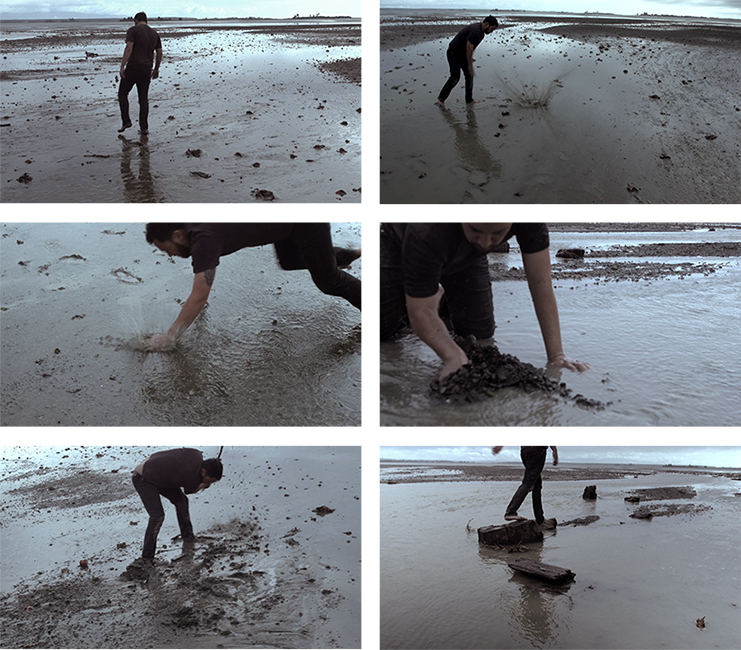
Shannon Te Ao, Untitled (after Rakaihautu), 2012, video still, single-channel video with sound, 3 min 26 sec. Cinematography by Iain Frengley. Image courtesy of the artist.

Bridget Reweti, Excuse me, you’re in my shot, 2012, video still, two-channel digital video with sound, 3 min. Image courtesy of the artist.
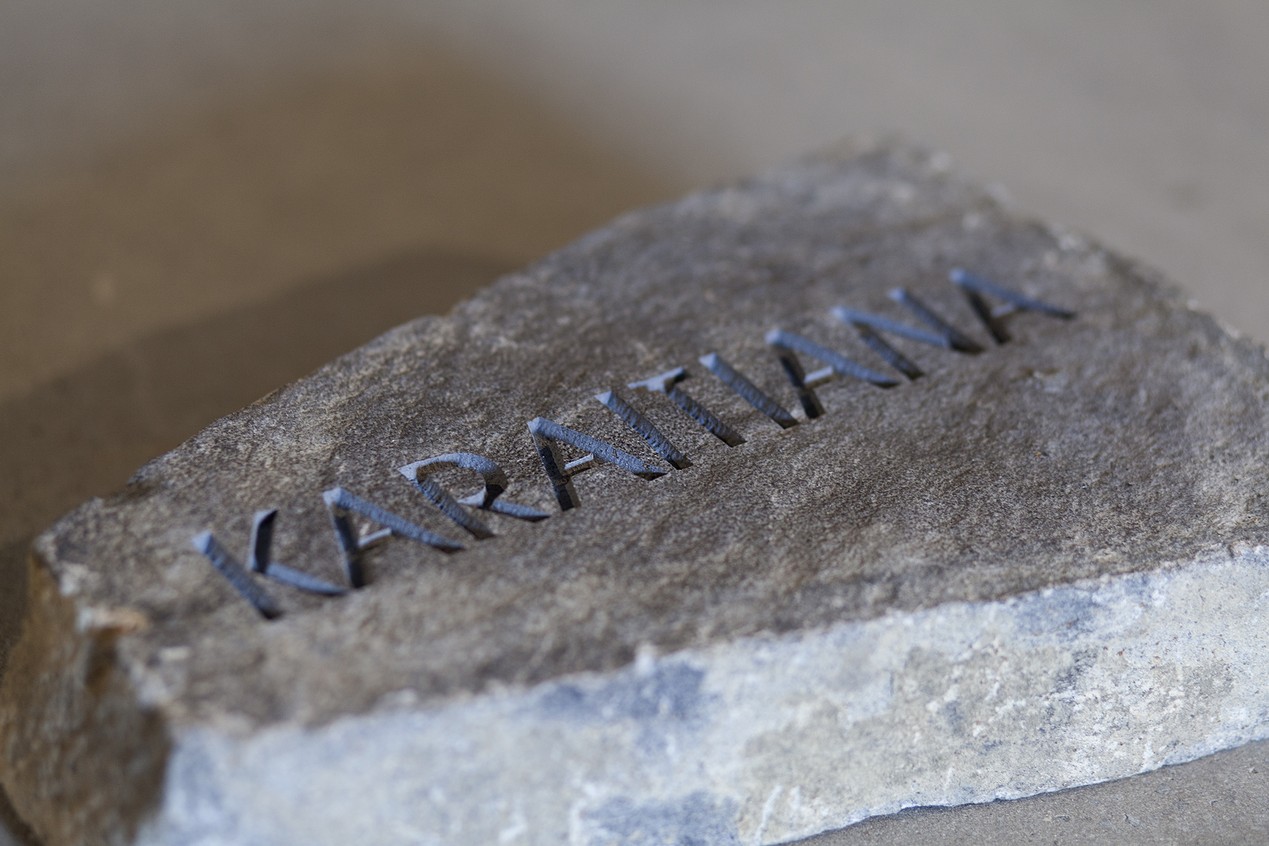
Ana Iti, First, they chose a name, 2016, recycled Halswell quarry stone with engraving, audio. Image courtesy of the artist and Daniela Aebli.
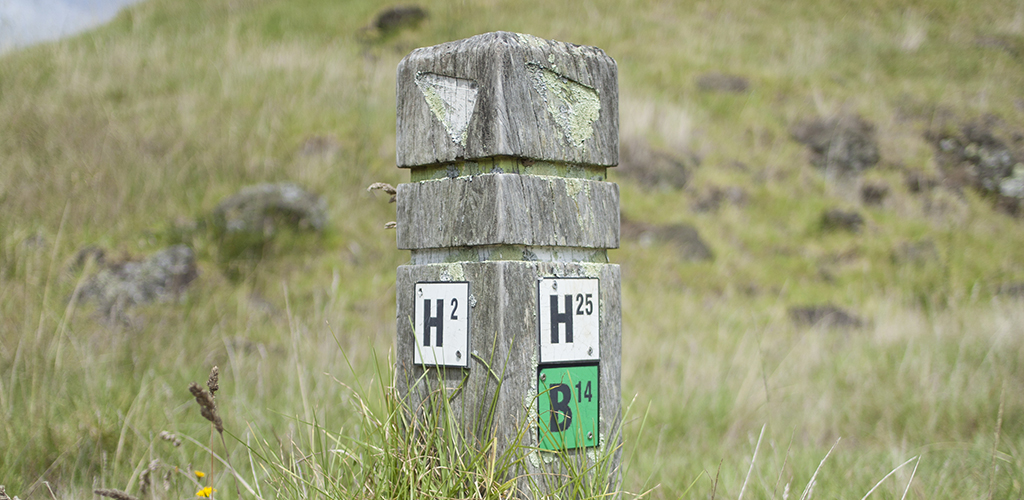
Rebecca Ann Hobbs, Ōtuataua Stonefields marked walks (Botanical Walk and Historical Walk), 2016. Image courtesy of the artist.
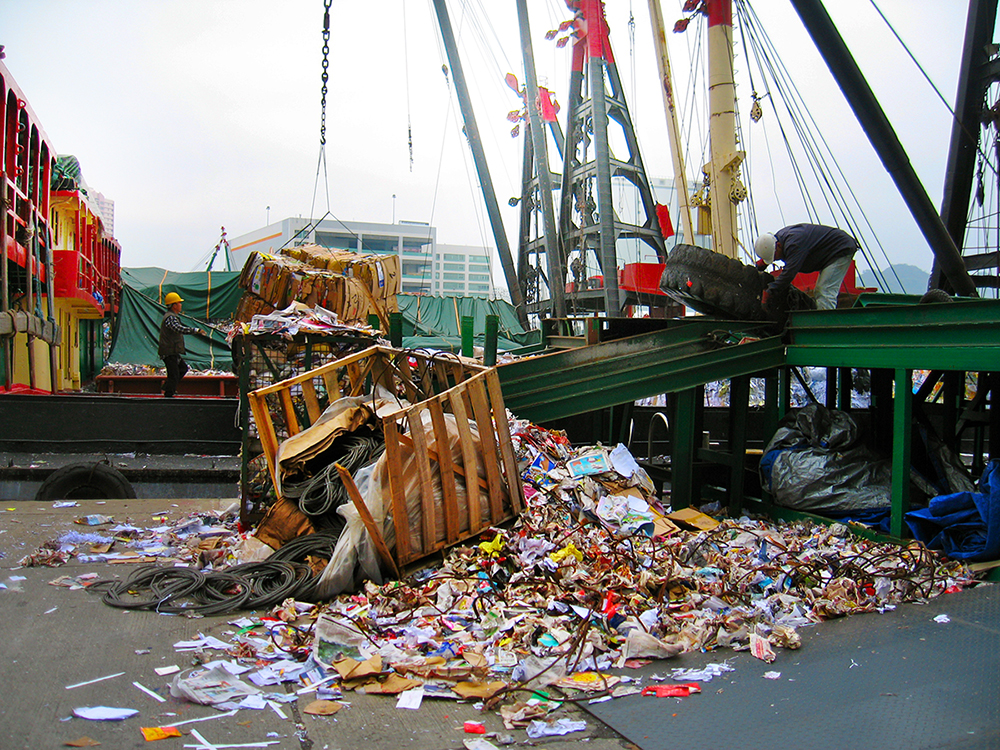
Yuk King Tan, The Limit of Visibility, 2012, single-channel HD video loop, 8 min 14 sec. Image courtesy of the artist.
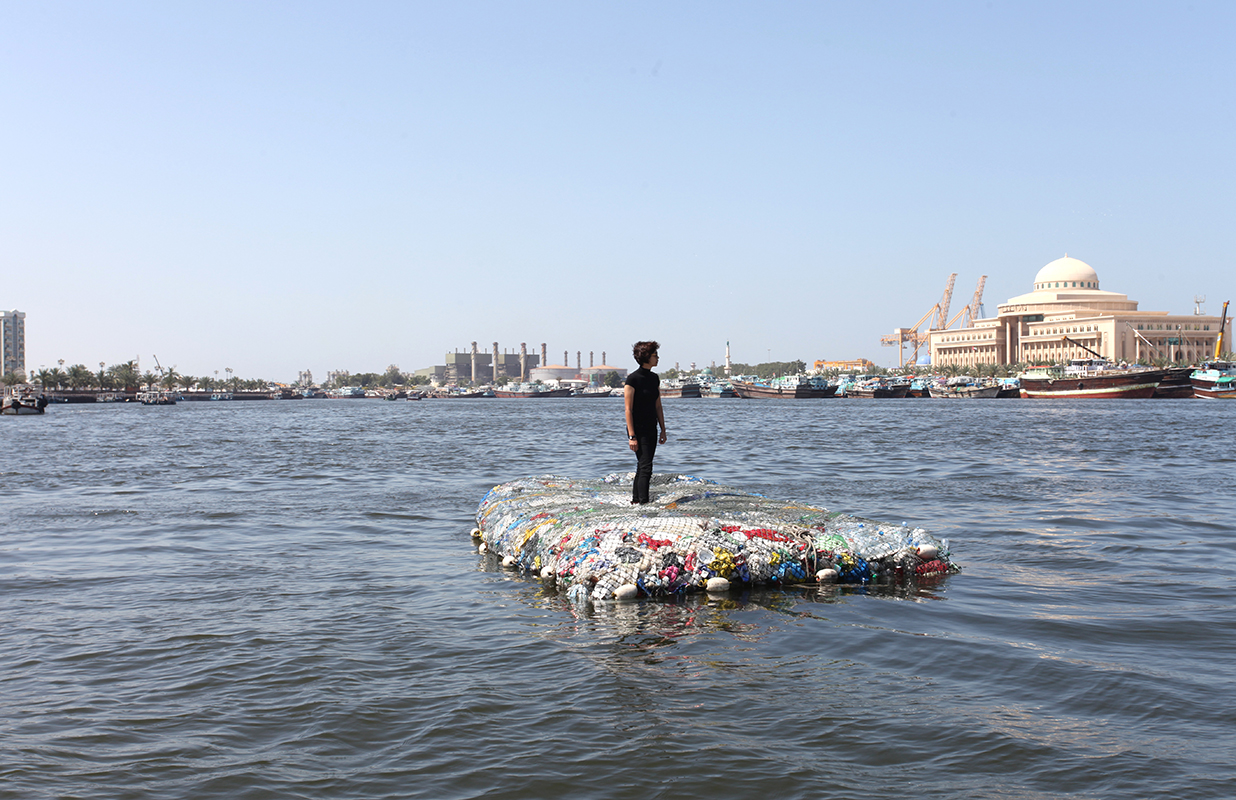
Tita Salina, 1001st Island – The Most Sustainable Island in the Archipelago, 2015, video still. © Tita Salina. Image courtesy of Alfredo Rubio for Sharjah Art Foundation.
At a rivermouth where the silt-rich water meets the briny south of the Pacific, and the wind and the tide beat a relentless assault against the cliffs until there is nothing but soft black sand, the people have grown accustomed to thinking about this muddy verge as a place where battles are fought.
Here, the earth that bends towards the sea is the kind of grey that makes the cloud-thickened sky look radiant. And the awa, with its fleshy, oil-slicked tongue, marches slovenly towards the oncoming tide so that each hour is a compromise, each second a concession, and the mangroves, with their black palms upturned towards the sky, seem to curse this wretched land.
The fitful wind that rolls off the churning sea casts a pall over the coast, cloaking it in a fine mist of vision-searing grit and salt. And the sand-dunes that emit the heat of a receding sun fail to fortify against the infernal wind that endlessly ricochets between sheer limestone cliffs and drives away any other thoughts than that of the land itself.
This whenua used to be as changeable as the tide. The hot earth would rise up through tectonic fissures, slaking its fury in icy currents to form a hard-pitted mantle. Waters carved their path across this hostile terrain, ploughing through mountains and hillsides to form deep valleys and ravines and exposing raw seams of jaundiced flesh. In the summer, the earth would contract like stretched hide, and with the first rain of autumn, bloom violently so that the earth bulged and sagged and creaked like a poorly kept house.
Harsh frosts that silenced the inland plains failed to temper the ferocity of this shoreline. Blackened cliffs would raise an almighty cry before crashing into the seething foam below. And when the river flooded, it surged with the debris of volcanic fields, pungent forest floors and the claggy sediment of the riverbed itself.
The first people who arrived overlaid this restless topography with an animist vision. Landforms that punctuated their new territory acquired an ineffable mythology, and the mountains and lakes and rivers were bestowed with chiefly names. Boundaries constituted along natural contours became sovereign claims and so the land was subdued. Between themselves they waged war and consolidated territories, and laid their ancestors to rest in the crook of the whenua so that humankind and the earth became one.
Later, foreigners came to lay a nominal claim to this shore. They came aboard ships, trampling over this muddy foreshore so that it became a treacherous threshold. With clear motive, they dissolved the rights of the Indigenous through an abstract mandate and shaped the land to their will using new methods to plough and carve and burn. With little belief in charity and full faith in divine providence, they tilled the earth, raising an agrarian industry that bathed the river scarlet. And when the land was no longer profitable they drifted away leaving behind a listless solitude and quiet desperation that makes people treasonous and opens the doors to environmental degradation.
The sounding of the pūtātara has since been drowned out by truck horns and the low rumble of rural development and contracted machinery, and in the distance the silent omnipresence of oil rigs stationed at the edge of the horizon. Most days these rigs are obscured by a haze, utterly forgettable in a landscape that has become immovable in the minds of the people.
At night the earth burns so violently from the fossil fuels that are pumped out of the seafloor that the stars are banished from the sky and the world glows like a blacksmith’s forge ready to be cast anew. Metal vessels trawl the murky waters, searching for iron deposits with glowing eyes, and the wind continues its endless lament while the earth turns on its axis.
There is a black slurry that forms when the rain touches the remnants of this forest. It’s the kind of stuff that gets stuck under the nails, and invariably into the eyes and the back of the throat so that a deep cough brings up a lump of dark phlegm. During the day, the sun gazes weakly through the sulphurous haze that blankets the land in a tropical sweat and easy agitation, and in the hours between moonrise and dawn another kind of furnace lights upon the horizon.
For days now the forest has been burning. The smog so thick that it cast a shadow over the archipelago, and on the mainland they looked tersely towards the perilous south-east and make officious announcements about productivity losses, particulate matter and El Niño.
For almost a millennium this land has been a prized naval outpost for colonialists battling for control of the Pacific. With each subsequent regime, the people have been forced further and further into acquiescence, and now that some rough form of independence has finally begun to assert itself, the people are eager to shake off the burden of history.
To avoid controversy, the low grumbling of engines begins long before the sun rises, disrupting the dawn chorus of tropical birds as they clear a path through the thick undergrowth. Bulldozers clatter back and forth across the land, leaving in their wake gnarled veins of weeping earth that congeal into angry dark scabs. And finally when the people tire of this slow-moving progress, they shrug their shoulders in indifference and set alight this tinder-like earth with fuel.
The unique geology of this land—high in aluminium and peat deposits—is the result of millennia of vegetal death and anaerobic decay. Although in areas the earth remains undisturbed by machinery, ancestral burial sites have been erased almost over overnight, mass graves simply evaporated, their bones melted away in this caustic earth. With any luck, in less than a few decades the damage that has been wrought by humans will have crumbled away, leaving behind a fresh slate of wide roads and neatly allotted plantations. This land is used to forgetting, but for now the rain falls onto the scorched earth and for a while there is nothing but its soft pitter-patter.
Not far from here, the stench of burning petroleum is cut through with the rot of leftover dairy, rancid oil and soiled cardboard. On top of imports of oil, mobile phones and steel, millions of tonnes of trash are brought into this port city to be recycled into new consumables. This trash comes from the West in massive bales, stacked high as snowy mountains, yet no matter how quickly they process this waste, still more of it arrives by the hour, and soon it too becomes a permanent fixture upon this landscape, peeking out through the thin topsoil like exposed bone.
There are rumours that this rubbish is being used as cheap infill in reclamations out on the harbour. The land is sinking—or is it that the sea is rising?—and with each season another measure of land is forfeited. So now the people have resorted to pouring this imported waste into the sea, reclaiming the receding foreshore through determined intervention and building up a sea wall that will turn the ocean to freshwater in order to defend themselves from an assault from nature.
But the seas are already choked with another kind of rubbish floating in from the Pacific Gyre. A litany of plastic adorns the tide: shopping bags, chip packets, metallic wrappers and cellophane; abandoned fishing nets, electronic casings, chunks of polystyrene like equatorial icebergs; microbeads, brand new lunchboxes, disposable cutlery and an entire flotilla of drink bottles, some still carrying their label: Coca Cola, black barley tea and containers of Chinese origin with the words “bottled in Fiji”.
It pools at the convergence of tides, forming vast continents where no politics can corrupt its unmoored passage, no law govern its interconnected abuses.
On a cool foggy morning, like the kind that follows a densely humid summer, a ballistic missile screeches high over a mountain range, breaking into three pieces before landing in the Pacific Ocean. Over the coming years, pieces of this missile would be carried west along a black current, settling into crevices and gullies to be covered with sediment. Single-cell lifeforms and deep-sea pressure are indiscriminate towards this missive and so this ballast is like others before it; timeless, a-historic, simply tracing a cruel arc of fear and self-preservation.
Elsewhere, a cutter is driven into the seabed, tearing up sedimentary rock and coral reefs and pulling up large quantities of wet sand and pulverised shell to be deposited onto a narrow bay. The tranquillity of this isolated outpost, where impoverished palms cling to unforgiving limestone shores, is now upset by the thrumming of engines that compete with the mud-churned tide.
The island swells under the weight of newly laid runways, heavy machinery and missile stockades poised for an attack. Occupying vessels patrol these seas, turning back curious eyes, and though reclamation in this area has long passed its peak, operations here are so heavily guarded that in many jurisdictions this is a nowhere land—a terra nullius—though it perches on the edge of several claims.
Out on an extinct volcano on the edge of the Ring of Fire, where the dry atmosphere slows the passage of time and root vegetables form like geodes in the dirt, the unforgiving earth is broken to make way for new foundations. Roads are being laid with military precision, paid for by foreign loans that come sans the moral reprimands that accompany so many envoys of aid. So the people build up their hospitals, their airports and magistracies and they take pride in their self-determination while glancing cautiously over their shoulder, waiting for the day when their debt will be called upon.
Far away, a roughly hewn stone wall follows the contour of the land, undulating towards a secluded harbour that opens out towards an unknown future. The hills run red and gold and violet, their tussocked slopes catching the setting sun, while the muddy bay below embraces the incoming tide carrying fragments of a faraway land. Small man-made depressions like the footprints of giants pace across this forlorn reserve, and out on the surrounding farmland coloured flags snap in the conciliatory breeze. There used to be a maunga here and its absence is a physical manifestation of everything that has been ceded.
So the people have decided to make a last stand, occupying confiscated land that now vibrates with energy and anxiety, and forming a wall with their bodies to stop the onslaught of urban colonisation. But tonight all is quiet, the roads silenced, the protests retired, and just for a moment the land stands perfectly still.